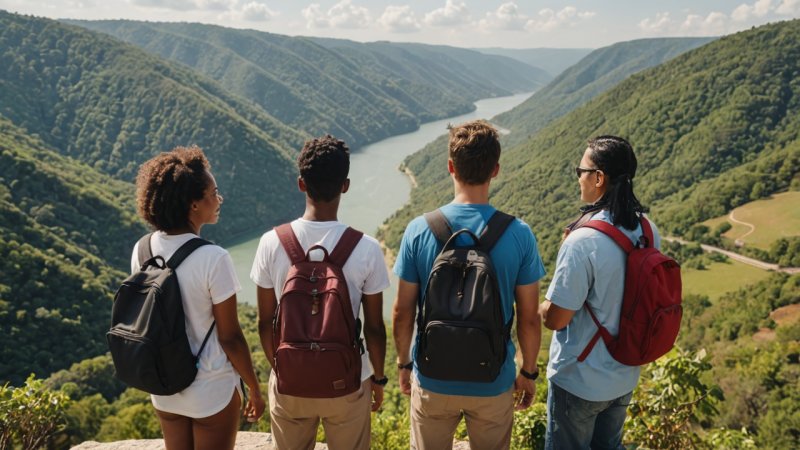Traveling with a group can be a rewarding and enriching experience. Whether you are embarking on a family vacation, a friends’ getaway, or an organized tour, the camaraderie of fellow travelers can enhance the joy of exploration. However, group travel also presents unique challenges, particularly concerning safety. From planning your itinerary to navigating unfamiliar environments, ensuring the safety of everyone in your group is paramount. In this article, we will delve into essential tips for traveling in a group while maximizing enjoyment and minimizing risks.
Understanding Group Dynamics
Before embarking on your journey, it is vital to understand the group dynamics. Every group is composed of individuals with different personalities, preferences, and comfort levels. Acknowledging these differences can help facilitate better communication and cooperation throughout your travels.
Establishing Roles and Responsibilities
Assigning roles within the group can streamline decision-making and enhance safety. Here are some roles you might consider:
- Leader: Guides the overall travel plan and ensures everyone is accounted for.
- Navigator: Responsible for maps, GPS, and directions.
- Safety Officer: Oversees safety protocols and emergency procedures.
- Finance Manager: Keeps track of shared expenses and budgets.
Choosing the Right Group Size
The size of your group can significantly impact safety. Smaller groups tend to be easier to manage and navigate through crowded or unfamiliar areas. However, larger groups can provide more security in numbers. Finding a balance between the two is crucial. A group of 6-10 members often strikes the right chord, allowing for dynamic interaction while maintaining safety.
Planning for Safety
Preparation is key to ensuring safety during your travels. Here are some essential planning tips:
Research Your Destination
Before you set off, conduct in-depth research on your destination. Understand the local culture, customs, and regulations. Familiarize yourself with any safety concerns, such as high-crime areas or natural hazards. Websites, travel forums, and government travel advisories can provide invaluable information.
Creating an Itinerary
Drafting a well-structured itinerary that includes activities, accommodations, and transportation can help keep your group organized. Ensure that everyone has access to the itinerary and is in agreement with the plans. Include check-in times and locations to ensure no one gets left behind.
Emergency Plan
Having a solid emergency plan is crucial. Discuss potential emergencies that may arise and outline procedures to follow. Make sure everyone knows:
- How to contact emergency services.
- Where to meet if separated.
- Local hospitals or clinics in case of medical emergencies.
Staying Together
While the thrill of exploration can sometimes lead to wandering off, staying together as a group is essential for safety. Here are some strategies to keep everyone accounted for:
Set Meeting Points
Designate clear meeting points at various locations, particularly in bustling areas or attractions. Ensure everyone knows these spots and the time to regroup, especially if the group plans to split up for a short while.
Regular Check-ins
Schedule regular check-ins throughout the day to ensure everyone is present and accounted for. This can be done informally during meals or designated breaks, allowing everyone to share their experiences and address any concerns.
Utilizing Technology
In today’s digital age, technology can significantly enhance group travel safety. Here are some tech tools to consider:
Group Messaging Apps
Utilize messaging apps like WhatsApp or GroupMe to create a group chat. This allows for instant communication, particularly if members are separated or if plans change unexpectedly.
Location Sharing
Consider using location-sharing features on smartphones. Apps like Google Maps allow users to share their location in real-time, making it easier to track group members without constant phone calls or messages.
Respecting Individual Needs
While the focus is on group safety, it’s essential to respect individual needs and preferences. This creates a more harmonious environment conducive to enjoyable travel.
Encouraging Open Communication
Encourage group members to voice their concerns, preferences, and needs. This ensures that everyone feels heard and valued, enhancing overall group dynamics and cooperation.
Adaptable Itinerary
Be flexible with your itinerary to accommodate varying interests and energy levels. This might mean splitting the group into smaller clusters for certain activities, allowing individuals to pursue what they enjoy most.
Cultural Sensitivity and Awareness
When traveling in a group, it’s crucial to maintain cultural sensitivity and awareness. This not only enhances your travel experience but also fosters positive interactions with locals.
Understanding Local Customs
Research and educate yourself on local customs and etiquette. This includes greeting customs, dress codes, and dining manners, which can vary widely between cultures. For example, in some countries, it is customary to remove shoes before entering a home, while in others, a firm handshake is a sign of respect.
Engaging with Local Communities
Encourage your group to engage positively with local communities. This could involve participating in community events, visiting local markets, or supporting local businesses. Such interactions can provide insights into the culture and strengthen the bond between travelers and locals.
Handling Conflicts
Traveling in a group can lead to disagreements and conflicts. Handling these situations with care is crucial to maintaining group harmony.
Addressing Issues Promptly
If conflicts arise, address them promptly and calmly. Avoid letting issues fester, as this can lead to resentment. Encourage open dialogue and find a resolution that accommodates everyone’s needs.
Utilizing a Mediator
If conflicts seem insurmountable, consider appointing a neutral third party within the group to mediate discussions. This can help facilitate a resolution and restore peace to the group dynamic.
Conclusion
Traveling in a group can be an exhilarating experience filled with memories and friendships. However, ensuring collective safety requires thoughtful planning, open communication, and respect for individual needs. By understanding group dynamics, preparing for emergencies, and utilizing technology, you can enhance your travel experience while safeguarding everyone in your group. Embrace the adventure, stay vigilant, and enjoy the journey together!






